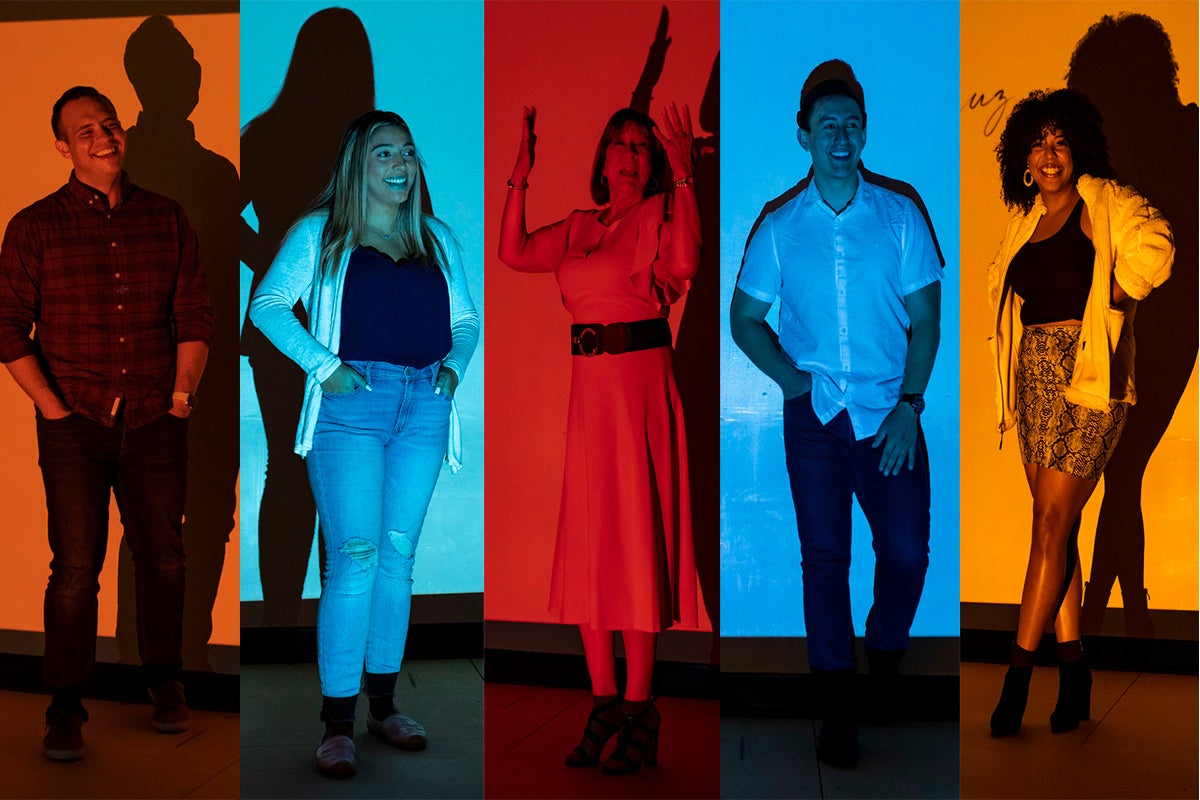In 1968, Hispanic Heritage Week launched a cultural celebration that would expand 20 years later into Hispanic Heritage Month, which recognizes the contributions and influence of Hispanic Americans to the history, culture and achievements of the United States.
And while the occasion, also known as Latinx Heritage Month, marks an especially important time to positively promote Latinx individuals and communities, the significance of representation is timeless and has the ability to shape lives across generations.
From books to TV shows and movies to music, five Knights share Latinx individuals and works of art that they feel celebrate their identities, as well as their cultural pride.
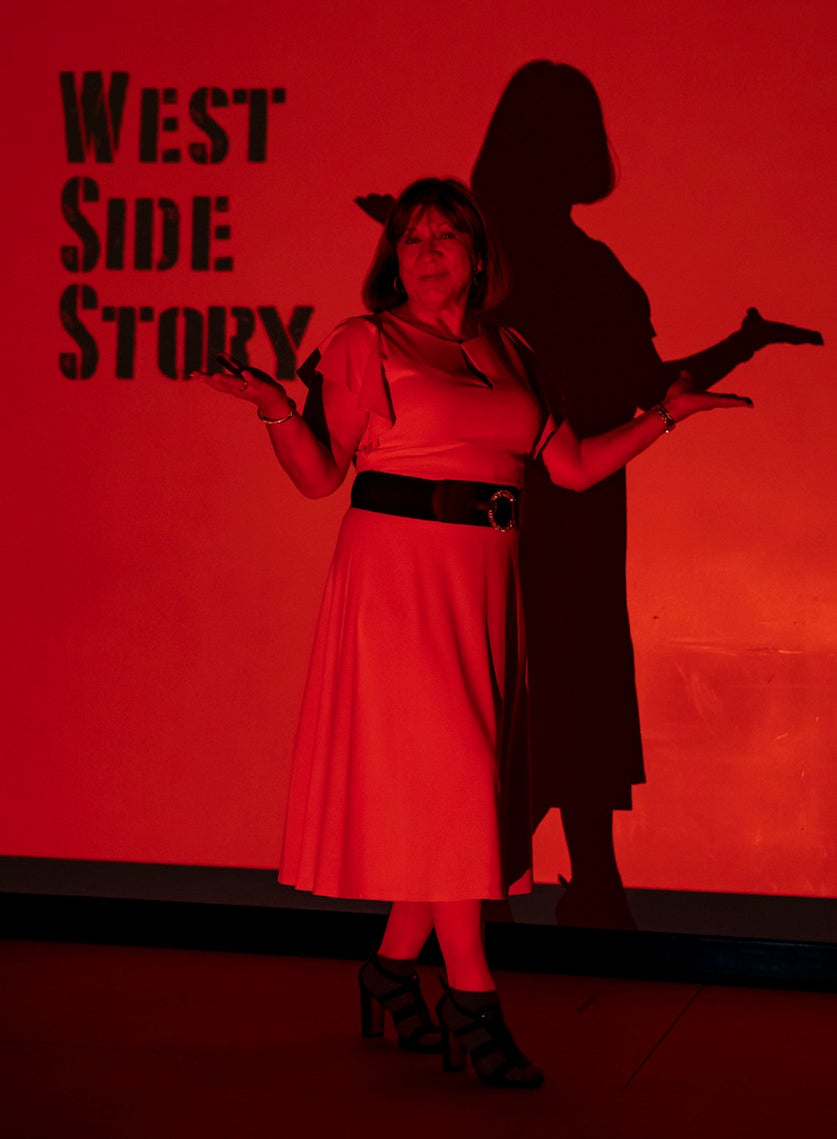
Linda Rosa-Lugo
Associate dean of Faculty Excellence, Graduate and Global Affairs; founder and director of UCF Listening Center at the UCF Communication Disorders Clinic; associate professor in the School of Communication Sciences and Disorders
The first time I saw the movie West Side Story was the first time I saw someone on the silver screen who looked like me. I am a Puerto Rican baby boomer who grew up in Soundview, a housing project in the Bronx, New York.
Every summer my brother and I went to Puerto Rico to visit my grandparents, my dad, sister and brother, and our extended family on both sides. We enjoyed the beauty of our island. We celebrated Christmas and understood the importance of Three Kings Day. I was raised with people from all walks of life, but I never had any Puerto Rican role models.
Then I saw Rita Moreno in West Side Story. Her character, Anita, brought our rich culture to life through singing, salsa dancing and her passion for family. In our neighborhood, I had been exposed to all those wonderful things by my mother — a dancer — and by our extended family.
“I live at the intersection of Spanish and English, on the corner of salsa and R&B, and right next door to pizza and arroz con habichuelas. I have lived a major portion of my life in two spaces, a Puerto Rican Latina in the states and a New Yorker in Puerto Rico.”
West Side Story also told the story of the rivalry between two teenage street gangs, the Jets and the Sharks. To this day, their conflict reminds me of how much we have struggled. We still have a long way to go for people to see us, Puerto Ricans, and the beauty of our diverse skin colors, the richness of our language and culture, our contributions [to society] — and most of all, as American citizens.
Being bilingual has had a huge influence on my life. To cross worlds through language was a major factor in my choice to become a bilingual special education teacher and a speech-language pathologist. My work with deaf and hard of hearing children, introduced me to the beauty of sign language. Understanding different languages allows you to enter a world that often can’t be explained to others.
I am honored to be recognized during Hispanic Heritage Month, but my heritage is just a natural part of my life.
I live at the intersection of Spanish and English, on the corner of salsa and R&B, and right next door to pizza and arroz con habichuelas (rice and beans). I have lived a major portion of my life in two spaces, a Puerto Rican Latina in the states and a New Yorker in Puerto Rico.
It is hard to put into words the struggles I have faced being Latina, but I stand on the shoulders of my family and friends who believed that this first-generation college graduate could be a role model for other Latinas. I hope I continue to make them proud.
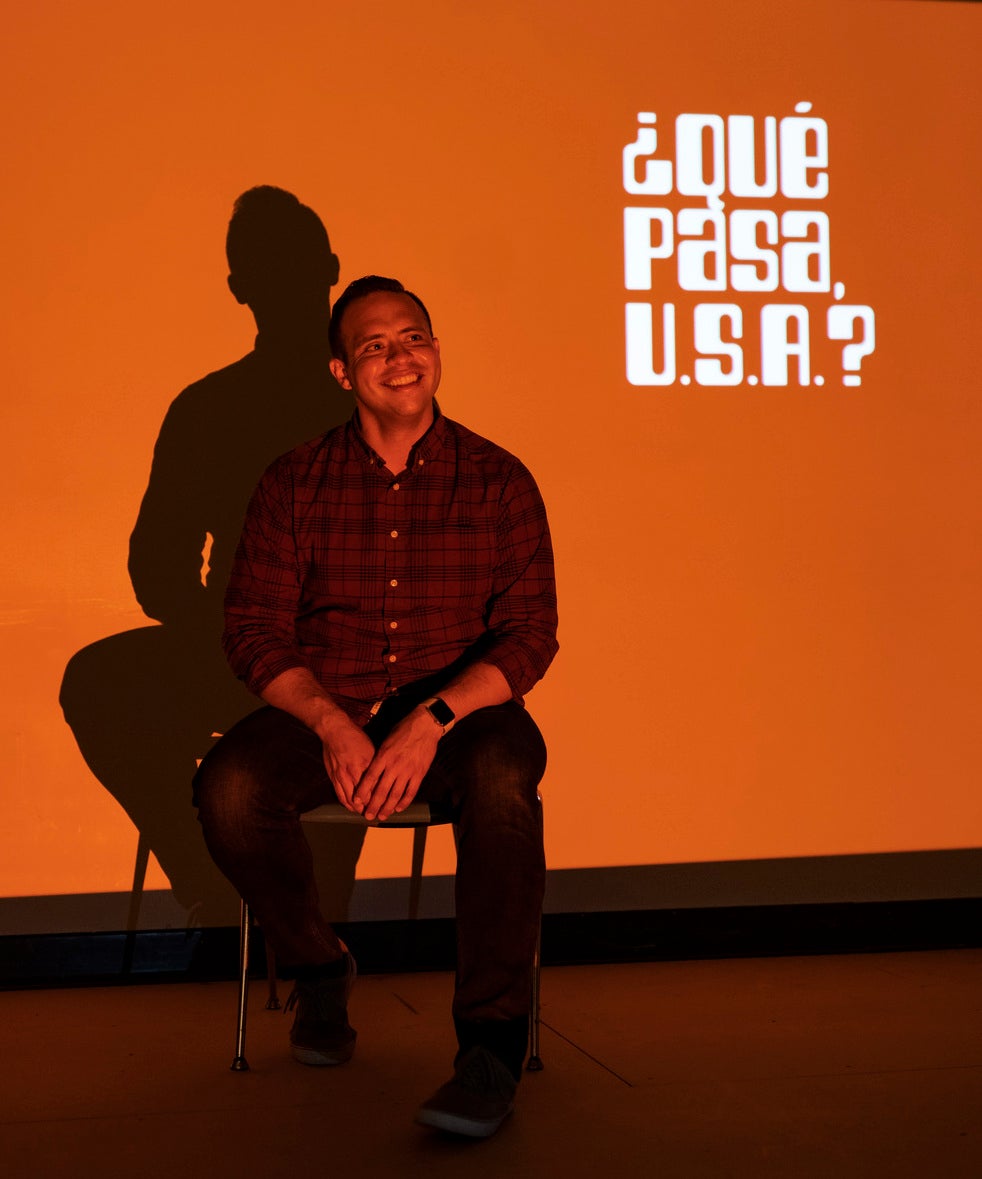
Justin Andrade ’10
Assistant director of programming for the Office of Student Involvement; president of the Pride Faculty and Staff Association; psychology grad
My ethnic and cultural heritage is a bit of a mix. My mom is from Cuba and my biological father is from Mexico, but my stepdad is from Colombia and grew up in Panama. So I grew up with influences from all of these cultures, but I really identify as Cuban and Colombian/Panamanian.
Some of the common threads throughout each of these cultures, and other Latinx cultures, is the love for family, the need to take care of each other, and pride in your culture. What I love about being multicultural is the added perspective that I can bring to conversations with colleagues or even close friends about different worldviews. As Latinx/Hispanic individuals, we all look different, we have different accents, we have different customs, different intersections of identities, but it’s not any less valid than any other person on that spectrum.
“I’ve realized that I don’t need to compromise any of my identities to fit into any kind of mold of what it means to be American, Latinx, or even Latinx and gay.”
When I was in fifth grade I started watching ¿Qué Pasa, U.S.A.?, which chronicled a Cuban family coming to Miami and experiencing American culture. It was actually the first American bilingual sitcom and the first time I got to really see myself on TV and hear things my abuela or abuelo would say. I related a lot to the daughter, Carmen, who was always kind of torn between wanting to understand American culture, but her family was always like, “No, you’re Cuban. You have to remember that you’re Cuban.”
In college I was doing a lot of identity exploration and I was trying to understand how I fit into this American makeup of what being Latinx is or what being American looks like. As I’ve gotten older I’ve realized that I don’t need to compromise any of my identities to fit into any kind of mold of what it means to be American, Latinx, or even Latinx and gay. As a Latinx person, often times being gay comes with challenges for acceptance because we’re a culture that’s very faith driven and fixated on gender roles. It’s important to raise visibility to all kinds of expressions of identity so we can kind of break those stereotypes and rewrite what it means to be LGBTQ in the Latinx community. So for me, it’s really important that I talk about both, and that they’re not exclusive — they’re intersected — because I’m just as proud of being gay as I am of being Cuban, Mexican and Colombian/Panamanian. Having those identities has created challenges for me as much as they have allowed me opportunities to educate others and step into who I am as a person.
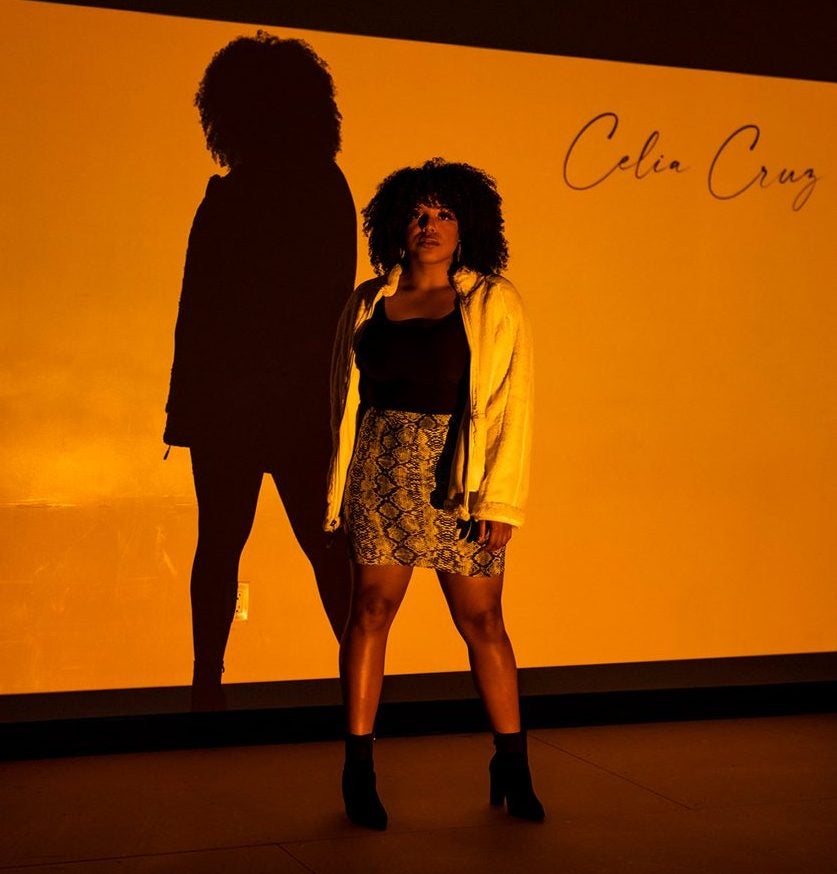
Geraldine Charles
Biomedical sciences major with a women’s and gender studies minor; Alpha Xi Chapter of Chi Upsilon Sigma National Latin Sorority Inc. member
I’m Afro-Latinx, but it’s not because my Latinx side is rooted in African descent, it’s because I’m biracial — Nicaraguan and Haitian. Within my household I was very loved and my identity was always embraced by my family. I’ve spent a lot of summers in Nicaragua growing up and being there just helped me understand my culture more, which is deeply rooted in family — even just having a sense of family with your neighbors — and religion. Nicaraguan culture is also really influenced by indigenous or Native American culture as well.
“Just seeing [Celia Cruz’s] want and need to celebrate this Latinx dark-skinned woman … was a very positive influence for me. We need to start having these conversations and celebrating the different hues and shades within the Latinx community.”
Growing up in the Latinx community there weren’t very many people who look like me, and sometimes it was hard for me to feel accepted in some spaces because of my darker complexation and my hair was a certain way. And I think that’s something people who are Afro-Latinx with their Latinx side rooted in African descent experience, too. Growing up and watching novellas with my grandmother, you would be duped into thinking there are no brown or Black Latinx people because everyone is of fair complexation and of “good hair.” There’s been times I’ve had to defend being Latinx or defend being Black.
Celia Cruz was a very big influence in Latin American music and her music videos were top tier visually. I was 7 or 8 when I saw the video for La Negra Tiene Tumbao (The Black Woman has Style). Just seeing her want and need to celebrate this Latinx dark-skinned woman and let the world know she is beautiful was a very positive influence for me. We need to start having these conversations and celebrating the different hues and shades within the Latinx community. I would like to see cultures across the world embrace being Black and brown as a beautiful thing, so little boys and little girls can grow up feeling accepted and loved and stand proud.
I have been blessed to be immersed in different cultures. And being Latinx and Haitian I’ve been able to see the world in a lot of different ways. It’s shown me that even though all of our struggles are different, we’re often struggling in the same ways. For this reason it’s important for us to stand in unity. This is why I chose to join Chi Upsilon Sigma. We’re Latin founded, not Latin based, and dedicated to “Educating, elevating, and empowering all women.”
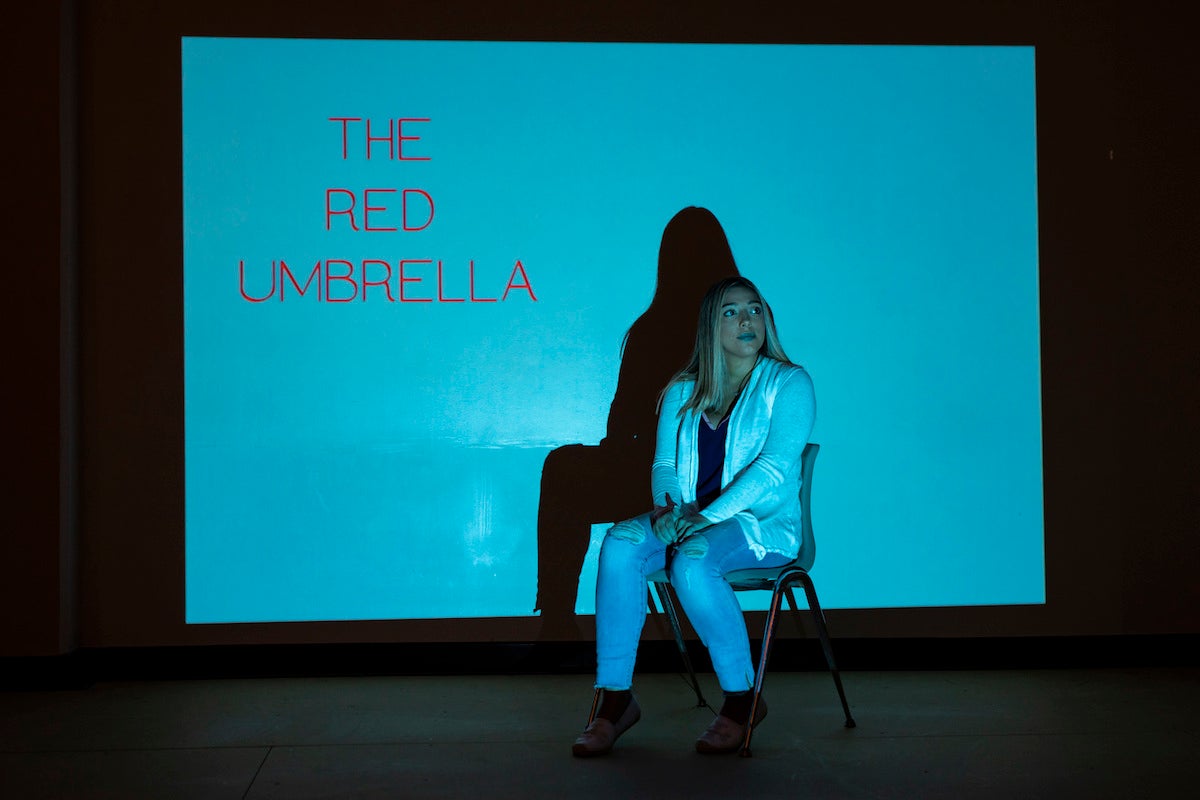
Sabrina La Rosa
Student Government president; political science major with minors in public administration and Spanish
One of my favorite books is The Red Umbrella, which is about the Operation Peter Pan flights in the ’60s when 14,000 children flew from Cuba to Miami and then moved to places across the United States to escape Fidel Castro’s rise to power. I get chills just thinking about it because these are real stories that happened to people — this story happened to the author’s grandmother — and it beautifully embodies the struggles and perseverance of the Cuban people.
I grew up in Hialeah, which is in Miami, and there is a very big Cuban community there. I feel like I was almost in a bubble and didn’t realize how big it was until I came to Orlando to study at UCF. As a Hispanic Serving Institution, UCF has a strong Latinx community here that is constantly embraced, but it’s just different being in a place where the understanding for Cuban experiences is dominant.
“The vibrancy and beauty that Miami is known for is largely influenced by the many Cubans who came there to rebuild. I think that’s a testament to the strength and positivity that Cubans carry with them, no matter where they are.”
Spanish is predominately spoken in Miami and it was actually my first language because I grew up in my grandparents’ home and that was a really big aspect of me understanding my Cuban culture. My family left Cuba about 60 years ago and they lost everything. Despite the hardships that many Cubans have faced, Cubans are known to be fun, laughing, happy people with an immense pride in their culture. The vibrancy and beauty that Miami is known for is largely influenced by the many Cubans who came there to rebuild. I think that’s a testament to the strength and positivity that Cubans carry with them, no matter where they are.
When my grandparents talk about leaving Cuba, they still cry as if they’re still there. I have these values for family and education instilled in me because of how much my grandparents lost. It’s taught me a lot about appreciating what you have and going for what you want — which is part of why I ran for student body president. I didn’t set out to be the first Latina Student Government president. Vice president Stephanie Blanco and I didn’t set out to be the first all-female and all-Latina ticket — we didn’t really have anyone to look up to but we didn’t let that stop us. It’s a huge honor to know that Latinas and other women can see us and know they can do it too.
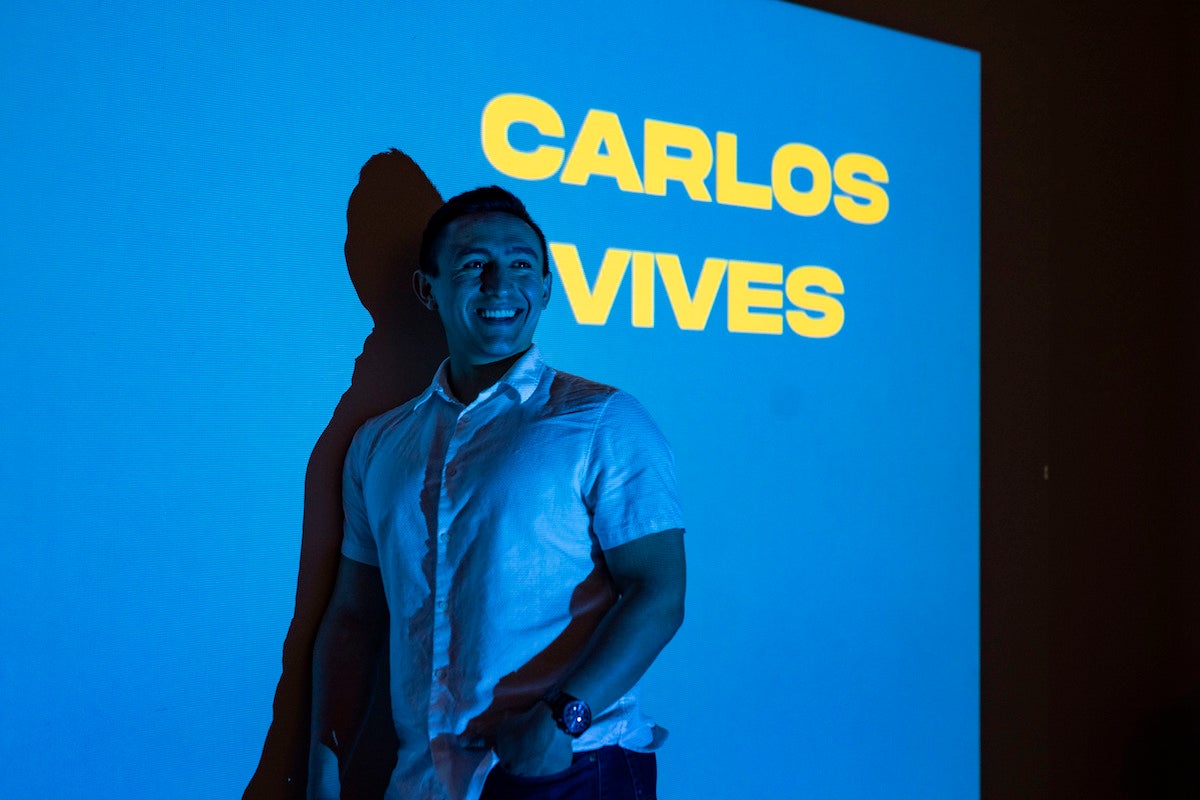
Sebastian Leon ’18
Nanotechnology master’s student; biomedical sciences grad with a minor in mathematics
When I think about Colombian influential figures, musicians instantly come to mind and one of my favorites is Carlos Vives. I think all Colombians pretty much listen to him and he is really known as a voice for Colombians, but what I really like about him is he incorporates traditional Colombian instruments and sounds with modern music production. We listened to him a lot when we first moved to the United States and listening to him reminds me of being around family.
“I feel like Colombians have a lot of pride in our country and a lot of passion in sports, and that’s very similar in the U.S. and other Hispanic cultures, so some things are universal.”
I was born in Bogota, Colombia, and my immediate family moved to Florida when I was 4 so my sister and I could have better opportunities. Since I moved here when I was really young, we assimilated into American culture really deeply, but I’m still connected to my Colombian roots. From my time living there, I remember being on the farms we had, picking fruits from trees, petting our family cow, playing soccer with my cousins and being surrounded by my extended family.
The first time we went back to Colombia was for my sister’s quinceañera and we’ve been back a few more times. It’s a different experience visiting now that I’m older and I can really see the differences with America. At the same time, I feel like Colombians have a lot of pride in our country and a lot of passion in sports, and that’s very similar in the U.S. and other Hispanic cultures, so some things are universal.
My father was born in Los Angeles and moved back and forth between the U.S. and Colombia throughout his life, so he was pretty well adjusted. But he did leave a good position in Colombia to come here and start over for his family, on top of finishing his education. Moving to the U.S. was very different for my mom. In Colombia she had degrees, her own business and was a professor in dentistry, but coming to the United States they don’t recognize those accomplishments, so it was a huge setback for our family in many ways. It was a culture shock to start a new life without having the big support system of our extended family back in Colombia. From that I learned that sacrifice is an important factor in the future success of your family. Without my parents’ sacrifices I wouldn’t have the privilege to be earning my master’s right now, and their perseverance helps me to keep working toward my goals.
